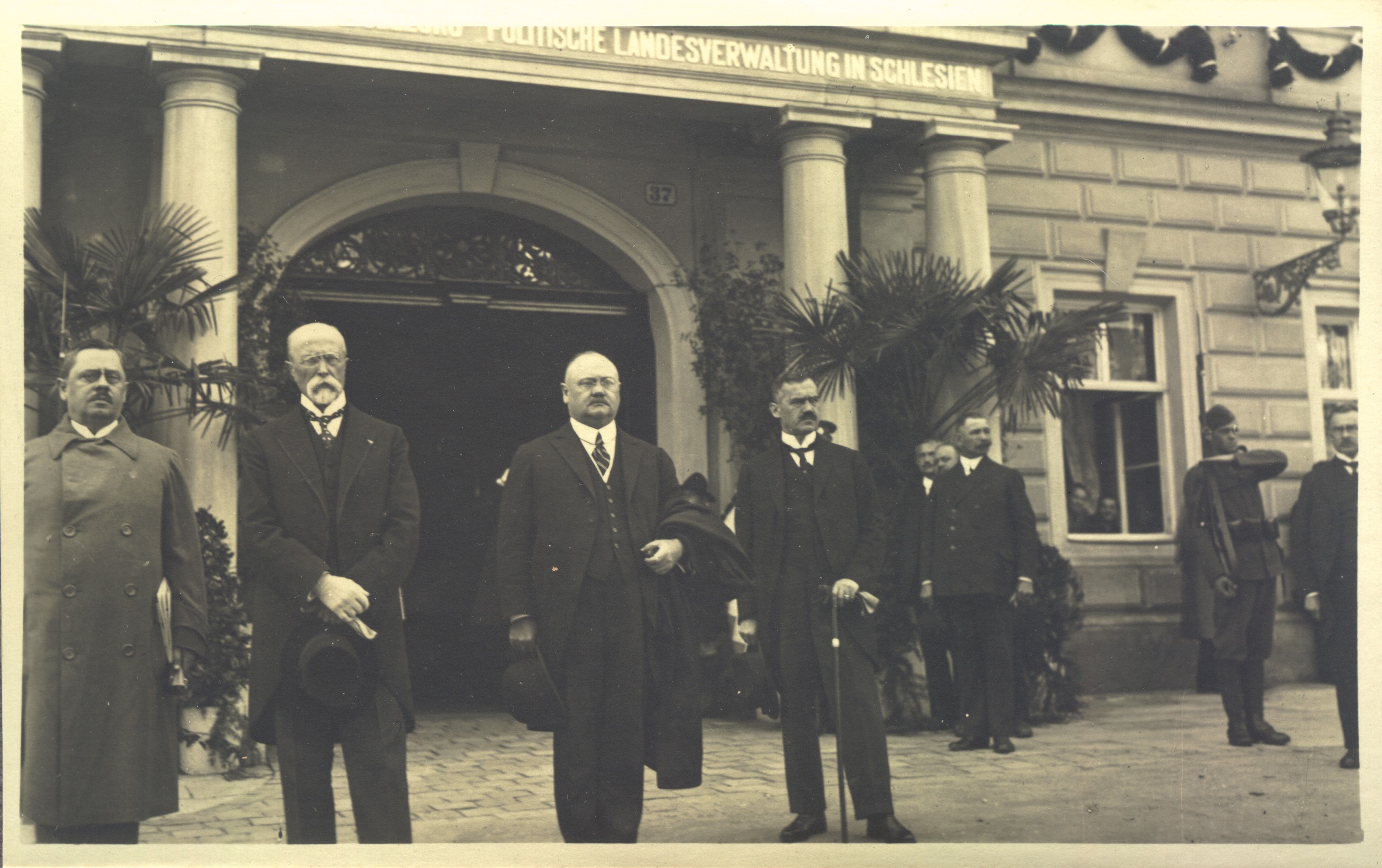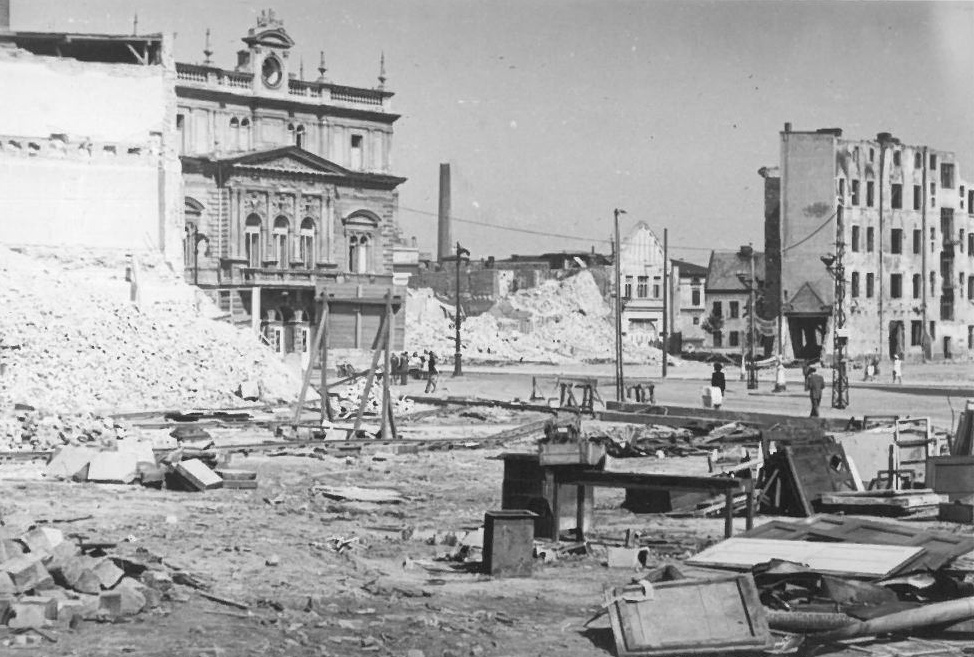Town history
The Statutory Town of Opava is an industrial and cultural centre of Czech Silesia, with its importance extending beyond the borders of the former district. The first written reference to a settlement on the crossroads of merchant trade routes named after the river Opava dates to 1195. In 1224 Opava recieved town privileges as confirmed by the royal charter. At the beginning of the 14th century, the Principality of Opava was formed with Opava later becoming its administrative centre. In 1742, after the First Silesian War when most of Silesia was annexed to Prussia, Opava became the capital of Austrian Silesia.

In 1820 after the defeat of Napoleon, the second congress of the winning monarchists took place in Opava. Members of the Holy Alliance – the Russian Tsar, Prussian King, and Austrian Emperor – together with representatives of England and France met to discuss a joint approach in the matter of a revolutionary movement in Italy. Up until the establishment of the Moravian-Silesian Land in 1928, Opava was the seat of the authorities.
Back then Opava was not a highly developed town and its inhabitants were largely germanized. Only in the second half of the 19th century the Czech national life started to flourish in Silesia with Opava becoming its natural centre. The stagnating economy, in particular wollen cloth manufacture and later food industry, was revived, albeit insufficiently, in 1855 when railway was built to connect Opava with Ostrava.

During the Nazi occupation in the years 1938–1945 Opava was the centre of the Silesian Reichsgau Sudetenland. During the final battles at the end of World War II the town was heavily damaged with some of its parts completely destroyed; 3,000 Soviet soldiers were killed in the battles.
After the war the town was rebuilt with new residential quarters and industrial plants, in particular engineering, food, paper, and pharmaceutical plants.

Today Opava is a statutory town, it is the seat of the Silesian University, numerous secondary schools, and cultural and scientific institutions. The Silesian Museum, founded on 1st May 1814, is the oldest museum in the Czech Republic and belongs among the most important institutions in the country (it features expositions on nature, history of Silesia, or development of lifestyle and art from the Gothic period up to date).
The poet Petr Bezruč (1867–1958) was born and is buried in Opava, the founder of modern genetics, J. G. Mendel (1822–1884) studied at the local grammar school. Among the natives of Opava belong also architect and co-founder of the Vienna Secession, J. M. Olbrich (1867–1908), writer A. C. Nor (1903–1986), and Joy Adamson (1910–1980), protector of the African wildlife, and author of books about the lioness Elsa.
There are many historic buildings in Opava, many of which are protected by the National Heritage Institute. The "White Opava", as it was called by Petr Bezruč, boasts beautiful parks and gardens, many of them situated on the perimeter of the town centre.
Calendar of Historical Events
1195 26 December, the first written reference to Opava (deed by Vladimir, Duke of Olomouc, issued in Opava)
1224 Opava is granted town privileges, making it one of the oldest towns in Bohemia (deed issued by Ottokar I of Bohemia, drawn up by notary Heřman in Hulín)
1247 3 May, a privilege by Přemyslid, the Margrave of Moravia, which granted Opava the right to hold annual markets and exempted it from taxes to compensate for the damage suffered in April 1241 during the Mongol siege
1281 Opava becomes the seat of the principality; King Ottokar II passes the Principality of Opava on to his son Nicholas I in 1269 as a compensation for his exclusion from the succession to the Bohemian throne; after his release from the Hungarian captivity Nicholas I is appointed Duke of Opava
1318 death of Nicholas I, Duke of Opava
1318 Nicholas II receives the Principality of Opava as a fiefdom under the Bohemian crown
1365 8 December, death of Nicholas II
1377 the Principality of Opava is divided among Nicholas II’s four sons (John, Nicholas, Wenceslaus, and Przemko) once the youngest son comes of age; Hradec nad Moravicí becomes the centre of the principality
1427–1431 the Hussites take control of Opava, Duke Przemko signs Four Prague Articles, spreading the Czech reformation, Opava becomes the seat of the principality
1465 Opava becomes a fiefdom of George of Poděbrady’s sons, in particular of Duke Victor
1466–1473 Opava suffers the consequences of the papal anathema for receiving Communion under both kinds declared by the pope Paul II on 23 November 1466, which was not withdrawn until 1 April 1473
1474 a crusade led by Matthias Corvinus, King of Hungary (in papal service); Matthias’s Black Army of the Hungary entered Opava on 23 August
1485–1526 the Hungarians rule the Principality of Opava; on 12 May 1485 Matthias Corvinus takes over the reign, deposing Victor of Poděbrady
1525 Lutheran reformation in Opava, the town gradually becomes the centre of reformation in Silesia
1603 20 October, Rudolf II declares imperial ban on Opava, follwed by a military intervention by the Bishop of Olomouc and Arbichop Franz von Dietrichstein
1607 23 September, after a 43-day siege Opava is seized by the Emperor’s army led by the General Giorgio Basta (Geisberger’s regiment)
1613 in the proces of Catholization, Karl I, Prince of Liechtenstein becomes Duke of Opava; as he is not well received in Opava, he moves his seat to Krnov, thus uniting the Principality of Opava and Krnov Region, which were divided since 1377
1648 after the Thirty Years’ War, many Czech inhabitants of Opava are forced to leave at that time still largely Evangelic town; numerous acts of Catholization take place aided by the Jesuit College founded in Opava during the war, Germans replace the Czechs in town, the remaining Czech population is under German oppression
1742 11 June, Wroclaw Peace Congress leads to the division of Silesia between Prussia (larger part) and Austria (smaller part) with the river Opava forming a border between the territories; Opava becomes the capital of Austrian Silesia and seat of the Royal Authority and the Silesian Public Convention
1782–1849 Austrian Silesia falls under the authority of the Moravian-Silesian Gubernium in Brno; the Silesian Public Convention meets in Opava, from 1739 Opava seats the central office of the region
1820 24 October to 23 December, the Holy Alliance congress is held in Opava
1849 Opava seats the proconsulate of the Silesian Government (from 1854 to 1928)
1850 Chamber of Commerce and the Provincial Court are established in Opava
1862 seat of the Silesian Diet until 1918
1864 seat of the Financial Directorate until 1918
1866 Opava becomes a statutory town with a municipal government
1870 the Provincial School Board is established
1911 Post and Telegraph Directorate for Silesia and Opava is established
1918 29 October to 20 December, Opava is the seat of the province Sudetenland; Opava is taken over by the Czech troops, power is transferred onto the authorities of the newly formed Czechoslovak Republic
1928 30 November, Silesia as a country ceases to exist, Opava loses numerous privileges connected with the position of the local government capital
1938–1945 Opava is the centre of Reichsgau Sudetenland
1945 22 April, Opava is liberated by the Red Army but is heavily damaged in the process; Opava is one of the most damaged towns in the Czechoslovakia
1945 May, rebuilding and reconstruction of Opava begins; on 27 October Opava again becomes a statutory town and the seat of the District National Committee
1946 villages Kateřinky, Jaktař, and Kylešovice become a part of Opava
1958 the first year of the cultural festival Bezruč’s Opava takes place
1976 surrounding villages become a part of Opava
1991 9 June, Silesian University in Opava is established
1994 training centre of logistics of Armed Forces of the Czech Republic is established
1996 Church of the Assumption of Virgin Mary becomes a co-cathedral
1997 7 July, big floods in Opava
2000 Horní Square turns into a pedestrian zone; on 26 October the Belgian royal couple visits Opava
2003 sports hall and multi-storey car park are built
2004 Dolní Square becomes a pedestrian zone
2006 the town hall Hláska is reconstructed
2007 Osvoboditelů Square turns into a park; Smuteční síň (Hall of Sorrows) is built in the town cemetery
2009 reconstructed Obecní dům (Municipal House) is open to public in Ostrožná Street
2011 Dům umění (House of Arts), wine bar, and elementary arts school are reconstructed in Pekařská Street
2012 Kulturní dům na Rybníčku (Cultural House na Rybníčku) is reconstructed
2013 cycling trail Slezská magistrála (Silesian Artery) is opened
2014 Městské sady (City Gardens) are revitalized
2015 Hans Adam II, Prince of Liechtenstein visits Opava
2016 Lukáš Vondráček, a pianist from Opava, wins one of the most challenging competitions for young musicians, the Queen Elisabeth Competition in Belgium
